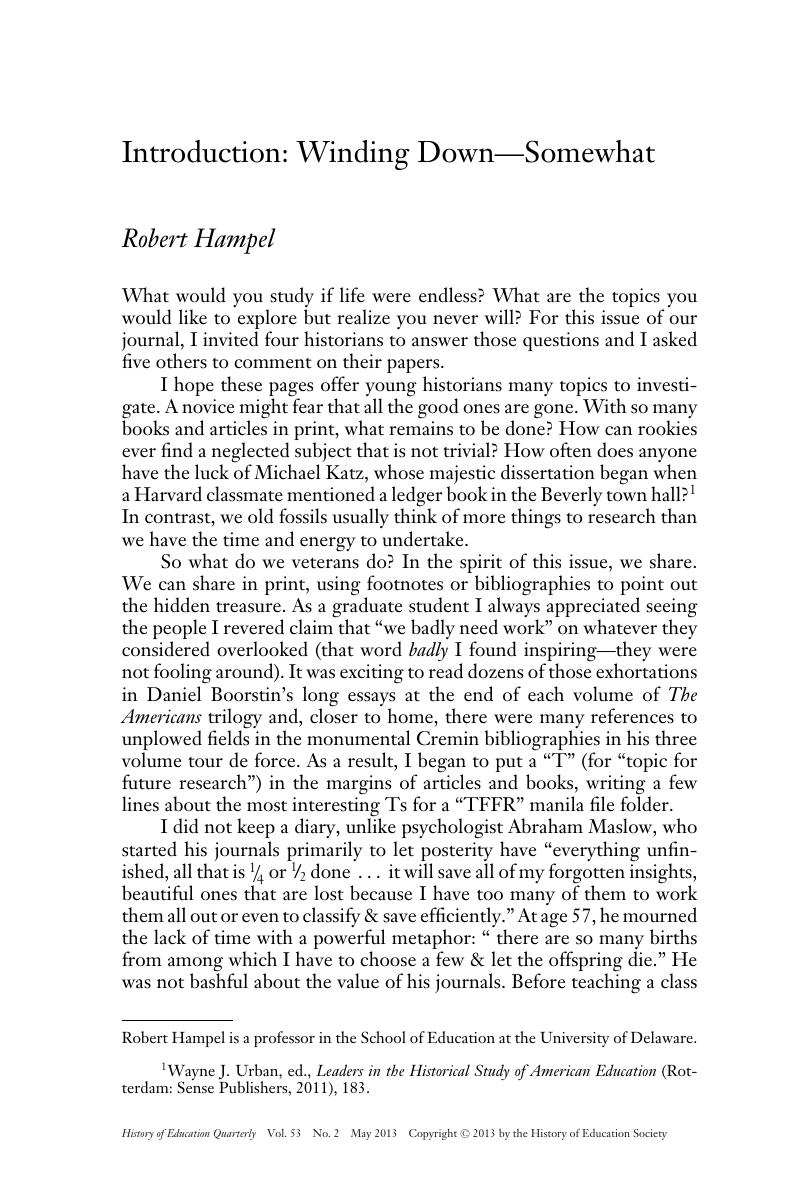No CrossRef data available.
Article contents
Introduction: Winding Down—Somewhat
Published online by Cambridge University Press: 20 January 2017
Abstract

- Type
- Introduction
- Information
- Copyright
- Copyright © 2013 by the History of Education Society
References
1 Wayne J. Urban, ed., Leaders in the Historical Study of American Education (Rotterdam: Sense Publishers, 2011), 183.Google Scholar
2 Richard J. Lowry, ed., The Journals of Abraham Maslow (Lexington, MA: Lewis Publishing Company, 1982), 1, 2, 188, 26.Google Scholar
3 George Steiner, My Unwritten Books (New York: New Directions, 2008), 71.Google Scholar
4 John Morton Blum, A Life with History (Lawrence: University Press of Kansas, 2004), 142.Google Scholar
5 David E. Narrett, Inheritance and Family Life in Colonial New York (Ithaca, NY: Cornell University Press,1992).Google Scholar
6 William H. McNeill, The Pursuit of Truth: A Historian's Memoir (Lexington: University Press of Kentucky, 2005), 156.Google Scholar
7 Ray Allen Billington, compiler, Allan Nevins on History (New York: Charles Scribner's Sons,1975), xxiv–xxv.Google Scholar
8 John Lukacs, Last Rites (New Haven, CT: Yale University Press, 2009), 76.Google Scholar
9 Thomas D. Clark, My Century in History (Lexington: University Press of Kentucky, 2006).Google Scholar
10 John Hope Franklin, Mirror to America (New York: Farrar, Straus and Giroux, 2005), chapter 23.Google Scholar
11 Ray Allen Billington, “Why Some Historians Rarely Write History: A Case Study of Frederick Jackson Turner,” The Mississippi Valley Historical Review 50, no. 1 (June 1963): 27.Google Scholar


